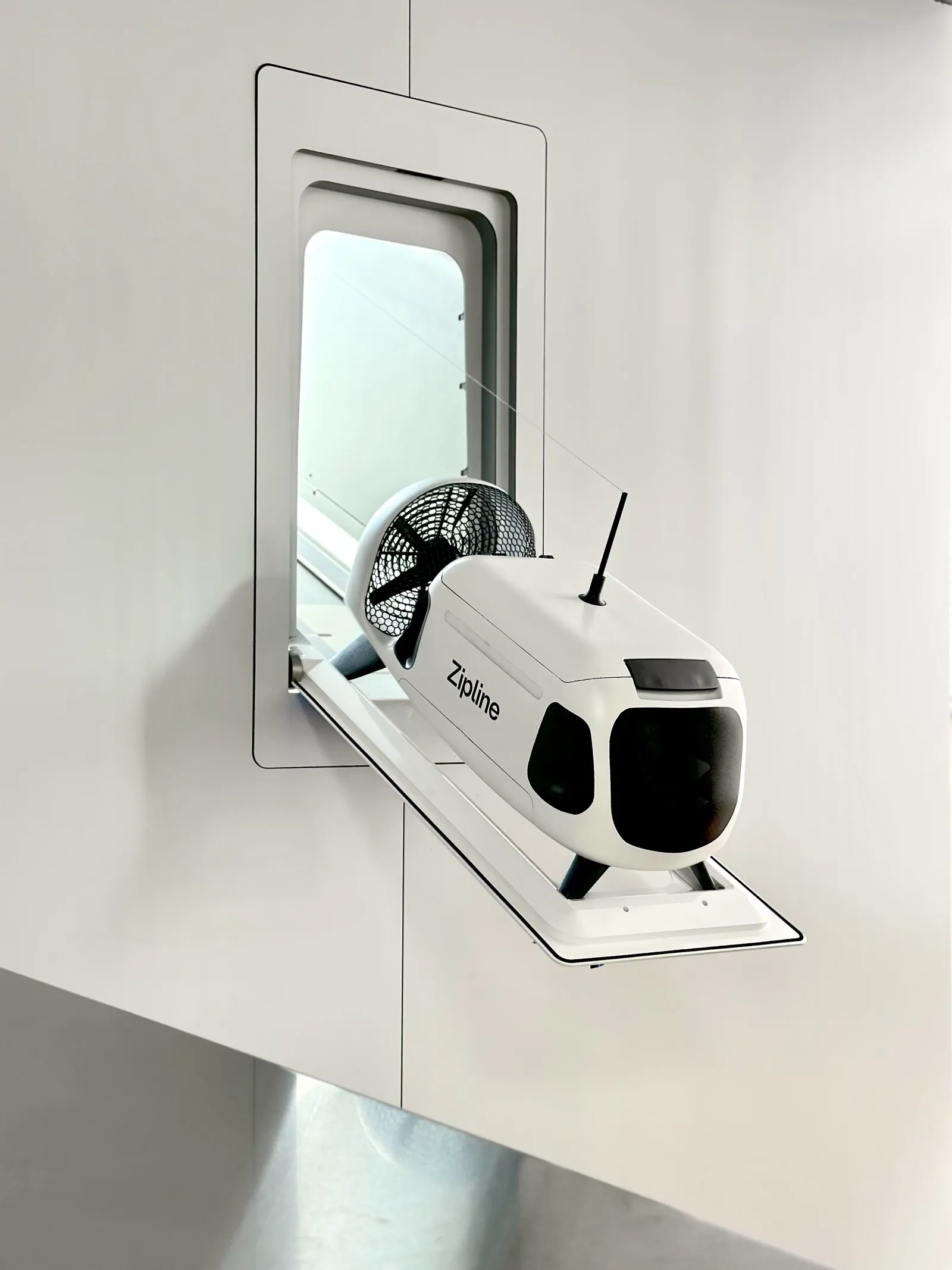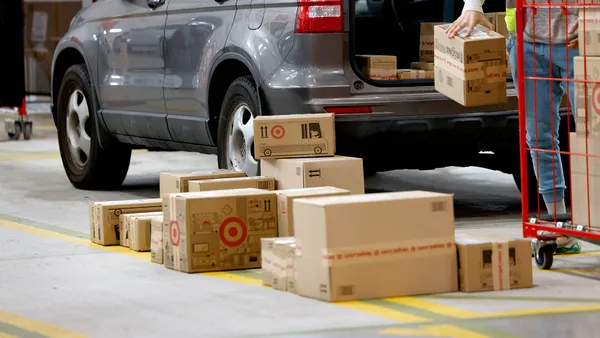Dive Brief:
- Zipline is launching a home delivery service that leverages a drone-droid delivery team, according to an announcement Wednesday.
- When the drone arrives at its location, it hovers while an autonomous droid it carries maneuvers down a tether before dropping off the package. This allows deliveries to be made in areas as small as a patio table or the front steps of a home, versus a spacious yard that drone services often require.
- Zipline plans to make more than 10,000 test flights using about 100 aircraft this year for the "Platform 2" service. The company will deploy its first customer pilot shortly after testing, per a fact sheet.
Dive Insight:
A few customers have already signed onto Zipline’s service, including restaurant chain Sweetgreen and Michigan Medicine.
Zipline has carved out a reputation as a delivery provider for critical health care items. The company serves 3,400 hospitals and health facilities globally, delivering a wide range of cargo ranging from COVID-19 vaccines to insulin, CEO and co-founder Keller Rinaudo Cliffton said in a video presentation Wednesday.

But the company seeks to deliver more goods in a variety of sectors, including e-commerce and food, which have different needs to service their end customers. Zipline knew it needed to be able to deliver in a customer's available space in order to create an experience that works for everyone, which is where the droid comes in handy, Chief Technology Officer Keenan Wyrobek said in the presentation.
The drone delivery company has split its technology into two categories to describe the different use cases and customer needs. The Platform 1 drone system focuses on enterprise, business and government deliveries and needs two parking spots' worth of space to complete a delivery, while its new Platform 2 targets home delivery and needs much less space thanks to the droid's capabilities.
"The Zip [drone] has wings to fly fast and far, and it can also hover in place when it gets to its delivery destination," Wyrobek said. "While the Zip is hovering, the delivery droid lowers to drop off the package, and it's the droid that enables deliveries to land exactly where you want it."
The Platform 2 Zip drone has a 10-mile service radius for payloads between six and eight pounds from a single charging dock, and it is expected to complete deliveries in that range in about 10 minutes. It can also fly up to 24 miles from dock to dock.
"Because Zips can move from dock to dock, Zipline can dynamically respond to peak order times – ensuring there’s enough delivery capacity for an urgent prescription delivery or a busy Friday pizza night or weekday lunch rush," a news release said.
Other companies have also rolled out ambitious plans for drone delivery networks. Wing, a subsidiary of Google parent company Alphabet, aims to handle millions of deliveries in its drone network by mid-2024. Meanwhile, Walmart's drone delivery service with DroneUp aims to be able to deliver 1 million packages annually and has expanded to several states.














